
Chinese Medicine
- TCM Theory
- Acupuncture
- Auricular Acupuncture
- Chinese Herbology
- Pathologies and Patterns
- Eastern Nutrition
- Tuina (bodywork)
TCMcentral's Library
Acupuncture Directory




TCM Theory: Yin and Yang
What is Yin/Yang
Cyclical Motion
Transformation
Four Aspects
Body Structure
Opposition
Clinical

Yin and Yang may be the most important theory in Chinese Medicine. The concept of Yin and Yang is simple and at the same time vast in nature. The relationship of Yin and Yang can be represented in the famous Tai Ji symbol that is shown above and below. This symbol is called "Supreme Ultimate", describing the profoundness of Yin and Yang. Although Yin and Yang are opposite stages, they form unity and are complementary. Yin contains a seed of Yang, and Yang contains a seed of Yin which is represented by the dots within each color. The symbol is showing that nothing can be totally Yin or totally Yang in nature. Yin is constantly changing into Yang as Yang is constantly merging in to Yin. Calligraphy Master Jin Huai Wang once explained to me these concepts of Yin and Yang. He said, "The mountain has a Yin side (shaded) and a Yang side (sun drenched), and each of those sides contain Yin qualities and Yang qualities, just as the river, just as life (translation)." The most beautiful part was how he described Yin and Yang, from the tone of his voice to physical movement he was just as he performs his calligraphy a true expression of Yin and Yang. top
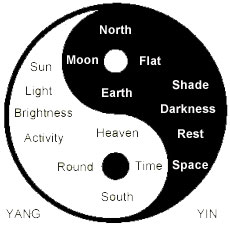
The earliest origin of Yin and Yang must have come from the observation of day turning into night and night turning into day. Since the day time is the time of activity it is attributed to Yang. At night or yin time, involves a time of rest and inactivity. The Yin Yang symbol below relate to the first correspondences of Yin and Yang. top
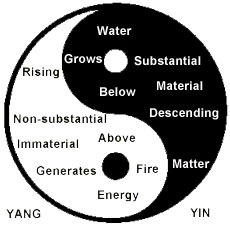
An example of transformation of Yin and Yang: Yang relates to creation and activity, which can transform into expansion that rises. Yin relates to condensation and materialization which can create contraction which descends. top
The Opposition of Yin and Yang:
Yin and Yang are opposite stages of a cycle. However opposition is relative, not absolute.
The Interdependence of Yin and
Yang:
Yin and Yang are interdependent of each other. Yin can not survive without Yang and vice versa. "There cannot be activity without rest".
Mutual Consumption of Yin and Yang
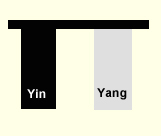
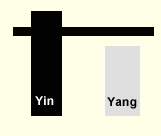
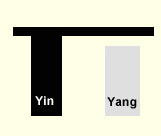
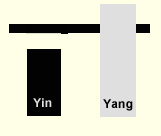
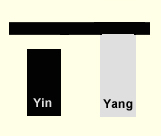
The Inter-transformation of Yin and Yang
Yin and Yang transform into each other. Yin can change into Yang and vice versa. Summer changes into winter, day turns into night and life turns into death. top
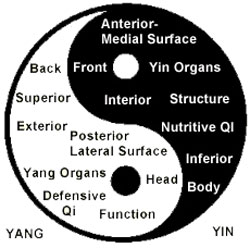
Every part of the Human body can be labeled as either Yin or Yang. top
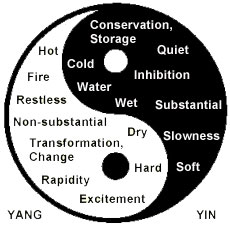
The opposition of Yin and Yang can be seen in the opposing Yin-Yang structures of the human body, the opposing Yin-Yang characterization if the organs, and in the opposing symptomatology of Yin and Yang. top
Clinical Manifestations of Yin and Yang
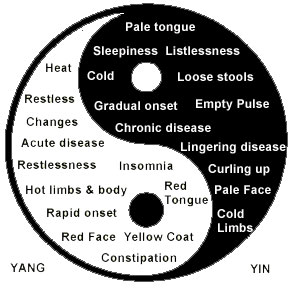
Terms of Service | Copyright 2009 TCMcentral.com | Traditional Chinese Medicine